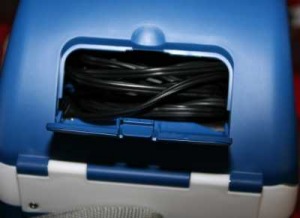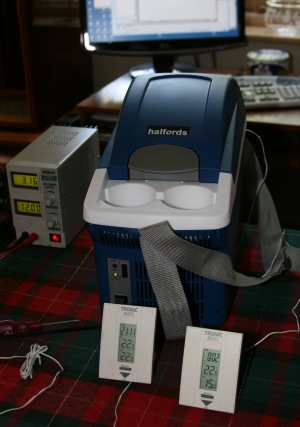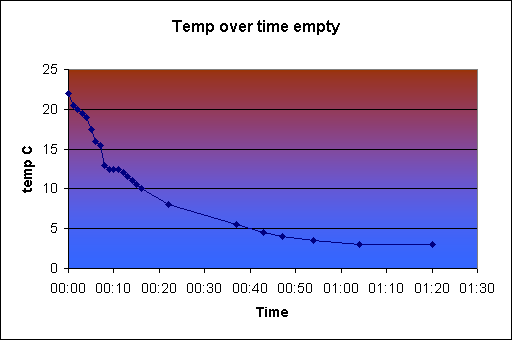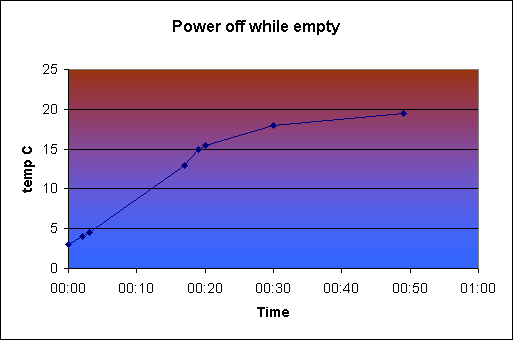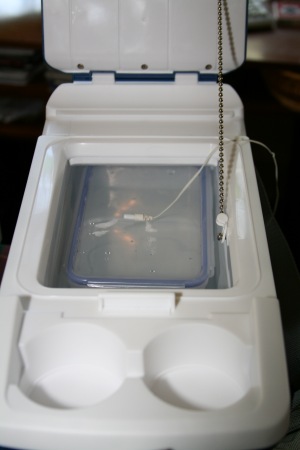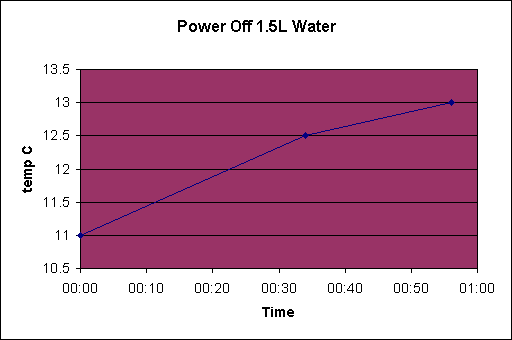Beware – ordering something “fulfilled by Amazon” is no guarantee they’ll look after you. I ordered something with a driver CD – due to bad packaging (from Amazon) it turned up with a mangled CD, although the item was pretty robust and looks okay. Well – ordered through Amazon so they’ll sort it out…
Well no. Get this:
Me: Item arrived in poor quality packaging from Amazon (direct). Badly squashed – product box was 2″ high, Amazon outer only 1″ high. CD with driver software in same box as product visibly damaged and unreadable. Can’t tell if product itself is okay but appears unbroken.
Amazon Rep: Hello, my name is *****. I’ll be happy to help you today.
Me: Hi. I think I might have messed up with the UI. This relates to “<piece of hardware>”
Me: Order # **************
Amazon Rep: I am sorry for the condition in which your order arrived.
Me: It’s hopeless packaging. It was squashed and the CD bent around the scanner – wrecked!
Amazon Rep: Thanks, Frank.
Amazon Rep: May I know the name of the item that arrived in a damaged condition? Me: Sure – as above. Specifically “<piece of hardware>”
Me: I ordered this direct from Amazon because I thought it might be better supported than the others available. Do you have the software available for download?
Me: There’s a bar-code on the box, but no hint of the manufacturer or a web site where I might find the software
Amazon Rep: I see that you have placed order for this scanner with the seller ‘M&S’ and it is ‘Fulfilled by Amazon’.
Me: Marks and Spencer?
Me: ’twas definitely in Amazon packaging.
Amazon Rep: Yes, the order is fulfilled by Amazon.
Me: Did the steamroller go over it before or after you posted it?
Amazon Rep: This item was labeled ‘Fulfilled by Amazon’. Items labeled ‘Fulfilled by Amazon’ are sent to you directly from an Amazon.co.uk Fulfillment Centre.
Me: Thanks – I know – that’s why I chose to get it from you as your delivery is generally hassle-free. But this doesn’t help with the mangled CD. Fortunately the scanner itself is made of ABS and designed for grease monkeys to drop it so it looks like it survived. But it’s just a brick without the CD.
Amazon Rep: Unfortunately, we are unable to create a replacement order for the items that are fulfilled by Amazon.
Amazon Rep: Could you please return the item for a full refund?
Me: No. I just want the software. If you’d like to pick it up subject to the distance selling regulations 2000 you’re welcome to do so – and I’ll tell warn everyone else about this crazy policy – but the software would be preferable for all concerned.
Amazon Rep: Could you source the software CD from your local store?
Me: Alas not, it’s not got any makers name on it, or that of the manufacturer. It’d make more sense to download it but there’s no clue as to who made it.
Amazon Rep: If you can source it from your local store, I can issue a partial refund.
Amazon Rep: If you wish to receive a full refund, you’re welcome to return it for a full refund.
Me: Distance selling regulations – you have to collect it if you want to go the refund route. Are you based in the USA? This is a European sale.
Amazon Rep: We will waive the return shipping charges, Frank.
Me: No, sorry, you won’t waive any shipping charges as you’re not allowed to make any. According to the Distance Selling Regulations you are required to send someone around to collect it at your expense. All I need to do is hand it over. But I’d much rather have the software.
Me: Please can you just tell me who produced (or sells) this thing, I’ll go to the web site and download it.
Amazon Rep: The manufacturer of this scanner is ‘SainSpeed ‘.
Me: Okay – thanks I’ll check the SainSpeed web site.
Me: they don’t have one :-(
Amazon Rep: I am sorry to hear about this, Frank.
Me: I’m flabbergasted. I thought Amazon was a safe place to buy things!
Amazon Rep: This is not a common occurrence, Frank.
Amazon Rep: We value this kind of customer feedback, as it helps us to provide the best possible service. I will forwarded your comments to the relevant department here.
Me: Okay. Is there any way you can get me a disk? if not, can you swap out the complete package?
Amazon Rep: Unfortunately, our system will not allow us to create a replacement order for the seller items, Frank.
Amazon Rep: If you prefer, you can return the item for a full refund, Frank.
Me: If you want to pass this on to the seller (if you reckon it’s not you) then please point me at them. Visa reckons it’s you (this is also governed by the Consumer Credit Act).
Amazon Rep: I understand your concern, Frank.
Amazon Rep: I am sorry for the inconvenience caused.
Amazon Rep: You have placed this order with the seller ‘M&S’ and it is ‘Fulfilled by Amazon’.
Me: So what am I supposed to do? Wait for you to collect this one and order another one?
Amazon Rep: In this case, I request you to return the item for a full refund.
Amazon Rep: Could you post it?
Me: Okay – you’ve got the address. Come and collect it. Meanwhile I’ll get Visa to recharge the value to my account. You contract was with Visa. Visa will pay you when the contract is fulfilled. I won’t pay Visa until their contract with me is fulfilled. Okay?
Me: So when do you want to pick it up?
Amazon Rep: In order to resolve this issue, we need to talk to you via phone. I will be happy to connect a call for you.
Amazon Rep: May I know your contact number?
<later>
Me: I’m on the ‘phone to one of your friends!
Me: Thanks for your help.
Amazon Rep: You’re welcome.
Amazon Rep: Thank you for chatting with Amazon.co.uk. We hope to see you again soon. Have a Great Day!
So, buying something from Amazon isn’t any guaranteed they’ll sort out any problems – even if their packaging is the problem. The subsequent telephone call went down the same route. I insisted on getting the software, not messing about with posting it back to them. Eventually they gave me the ‘phone number for this mysterious supplier: 0845-609-0200. I wouldn’t normally list a ‘phone number here, but a quick check revealed that it was the widely published customer service number for Marks and Spencer! I was skeptical, and queried this and asked where the number came from but they insisted that it really was the Marks and Spenser selling through Amazon. (The nature of the device – a diagnostic interface – is highly suspicious).
I’ll call Marks and Spenser tomorrow. It could be interesting. Amazon isn’t off the hook buy a long way.






